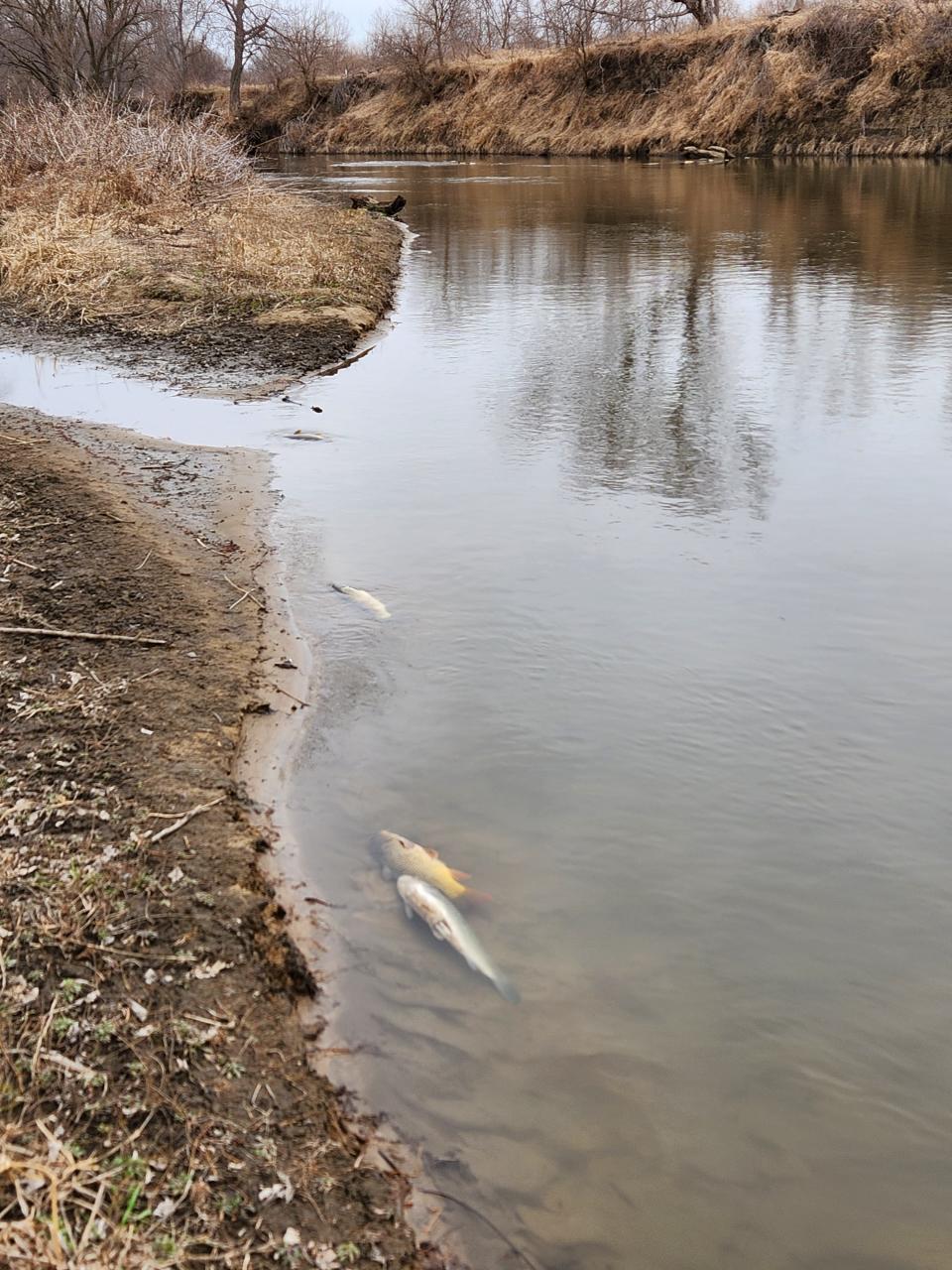Iowa DNR seeks harsher penalties in massive Nishnabotna spill that killed 750,000 fish
State environmental regulators want the Iowa attorney general to take action against the agricultural cooperative behind the catastrophic nitrogen fertilizer spill that wiped out about 750,000 fish for 50 miles along the Nishnabotna River system in March.
The Iowa Department of Natural Resources on Monday recommended attorney general's office take over enforcement against NEW Cooperative, a Fort Dodge farmer-owned business that reported the spill at its Red Oak elevator March 11. The transfer of responsibility is allowed when a violation is particularly grave and exceeds the DNR's $10,000 cap on fines, officials said.
Typically with a spill that reaches Iowa waterways, DNR seeks an administrative penalty and restitution for the fish that were killed.
The Iowa Environmental Protection Commission will consider referring enforcement against NEW Cooperative to the attorney general's office at its May 22 meeting in Ottumwa.
Here's what to know about what led up to the Iowa DNR referral.
How did the spill happen?
Workers at NEW Cooperative's Red Oak elevator called the DNR field office near Atlantic at 5:30 a.m. March 11 and reported that a valve on a line linked to a 500,000 gallon nitrogen tank had been left open all weekend. It released about 265,000 gallons of the liquid fertilizer into a stormwater drainage ditch that ran through a levee that emptied through an open floodgate into the East Nishnabotna River.
The spill made its way to the Nishnabotna River, killing thousands of fish along the way, Iowa and Missouri fishery officials reported, before reaching the Missouri River and being diluted by that river's greater flow.
What did NEW Cooperative do in response?
The cooperative built berms to contain the spill, pumped fertilizer from the ditch and levee, used lime to soak up the fertilizer, and excavated contaminated soil. Closing the floodgate, NEW Cooperative hired a consultant to sample recovered fertilizer to help determine the proper agronomic rates at it could be applied to cropland.
Complicating the cooperative's efforts, the area on March 25 received up to 1.5 inches of rain, and Red Oak Police Chief Justin Rhamy ordered the levee’s floodgate open. That destroyed a berm where the flow from the stormwater ditch met the East Nishnabotna River. Iowa DNR ordered the floodgate closed again until the cleanup had been finished. By March 29, NEW Cooperative said the berm at the ditch and the river had been rebuilt.

Is the cleanup completed?
With storms expected in late April, NEW Cooperative agreed to continue pumping the water around the stormwater ditch to avoid further contaminating the river. The co-op also has agreed to clean up contaminated soil in the ditch. The recovered water was being held in on-site tanks.
What did Iowa DNR do?
DNR Environmental Specialist Brent Martens worked with NEW Cooperative to contain the spill and sampled water for nearly 34 miles along the Nishnabotna River. Martens and other Iowa DNR officials worked with their Missouri counterparts to assess the extent of the fish kill. Testing showed high levels of ammonia and nitrates.
More: Eastern Iowa farmer accused of leaving fertilizer spill in Burlington
Is any other action expected?
A group of Iowans have asked Iowa DNR Director Kayla Lyon to launch her own investigation to determine whether the state's policies need to be changed to prevent another massive spill. The letter, written by Drake University law professor emeritus Neil Hamilton, former director of the Drake Agricultural Law Center, asks Lyon to “pursue all available remedies” including civil and criminal action through the attorney general's office.
The letter, signed by former gubernatorial candidate Fred Hubbell and former Iowa Lt. Gov. Sally Pederson, among others, also asks Lyon to work with the Iowa Department of Agriculture to examine policies around storage of agricultural fertilizer and determine whether Iowa has “gaps or inadequacies in the rules or their enforcement."
What are environmental groups saying?
"We’re glad to see the DNR is recommending further enforcement action through the attorney general," Alicia Vasto, the Iowa Environmental Council's water program director. "This is an important first step in seeking justice for the river, wildlife, and communities impacted by this devastating incident. Ultimately, the final enforcement must reflect the grave impact the fertilizer spill has had on the East Nishnabotna. Further, we must demand more protective laws and rules that will prevent this type of event from happening again."
What does NEW Cooperative say?
The co-op, with 80 locations around Iowa, said earlier this month it's worked with state regulators and others on the cleanup.
"We are deeply disappointed in what has happened, as NEW Cooperative has a strong environmental record, and it is also the first time in the company’s 50-year history that our emergency environmental response procedures have needed to be activated," the company said in an email. "NEW Cooperative was founded by local farmers with roots in these communities, which furthers our resolve to work to cleanup and mitigate this issue."
It didn't comment on Iowa DNR's referral to the attorney general's office Monday.
This article has been edited to correct the location of the Iowa Environmental Protection Agency meeting on May 22. It will be held at the Bridge View Conference Center in Ottumwa.
Donnelle Eller covers agriculture, the environment and energy for the Register. Reach her at deller@registermedia.com or 515-284-8457.
This article originally appeared on Des Moines Register: Iowa DNR wants AG to seek penalties in massive Nishnabotna fish kill

